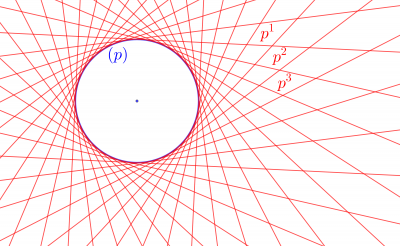Outline
Constructions of particular planar curves using GeoGebra
The presentation deals with the synthetic construction of specific planar curves which are defined by geometric motions and with the modeling of these constructions in GeoGebra dynamic system. We focus on the constructions of trajectories, envelopes, and centers of curvature and osculating circles of specific curves. We present a particular construction of all centers of curvature of these curves, i.e. the construction of the evolute of a curve. Our aim is to investigate the synthetic constructions without the use of coordinates and to formulate the proofs of them. We newly model selected types of curves in GeoGebra dynamic system which is an additional output to our theoretical conclusions and also a significant teaching aid at the same time. The constructions are meant to be dynamic and the curves are formed gradually as the traces of points or curves. All presented examples are intended to be used in the undergraduate courses on kinematic geometry (mandatory courses for secondary pre-service mathematics teachers who study teaching mathematics and descriptive geometry). The synthetic constructions together with their proofs demonstrated in GeoGebra dynamic system bring a new light into this area. It allows students to imagine the main idea of the proofs of the constructions and to investigate the properties of the curves more easily based on the pure geometry and visual aspects. Dynamic constructions, i.e. the possibility of changing positions of points and curves play the significant role here. GeoGebra offers also algebraic expressions which represent another tool for students how they can study and manipulate with those curves.
My aim is to show that even such a complex issue as kinematic geometry can be taught in an exploratory and experimental way. This approach can be applied in mathematical topics which are included in secondary school mathematics. This will be demonstrated during the presentation with examples on the inscribed and central angles that subtend the same arc on the circle (the inscribed angle theorem). The special case when the inscribed angle is a right angle will be considered too.
